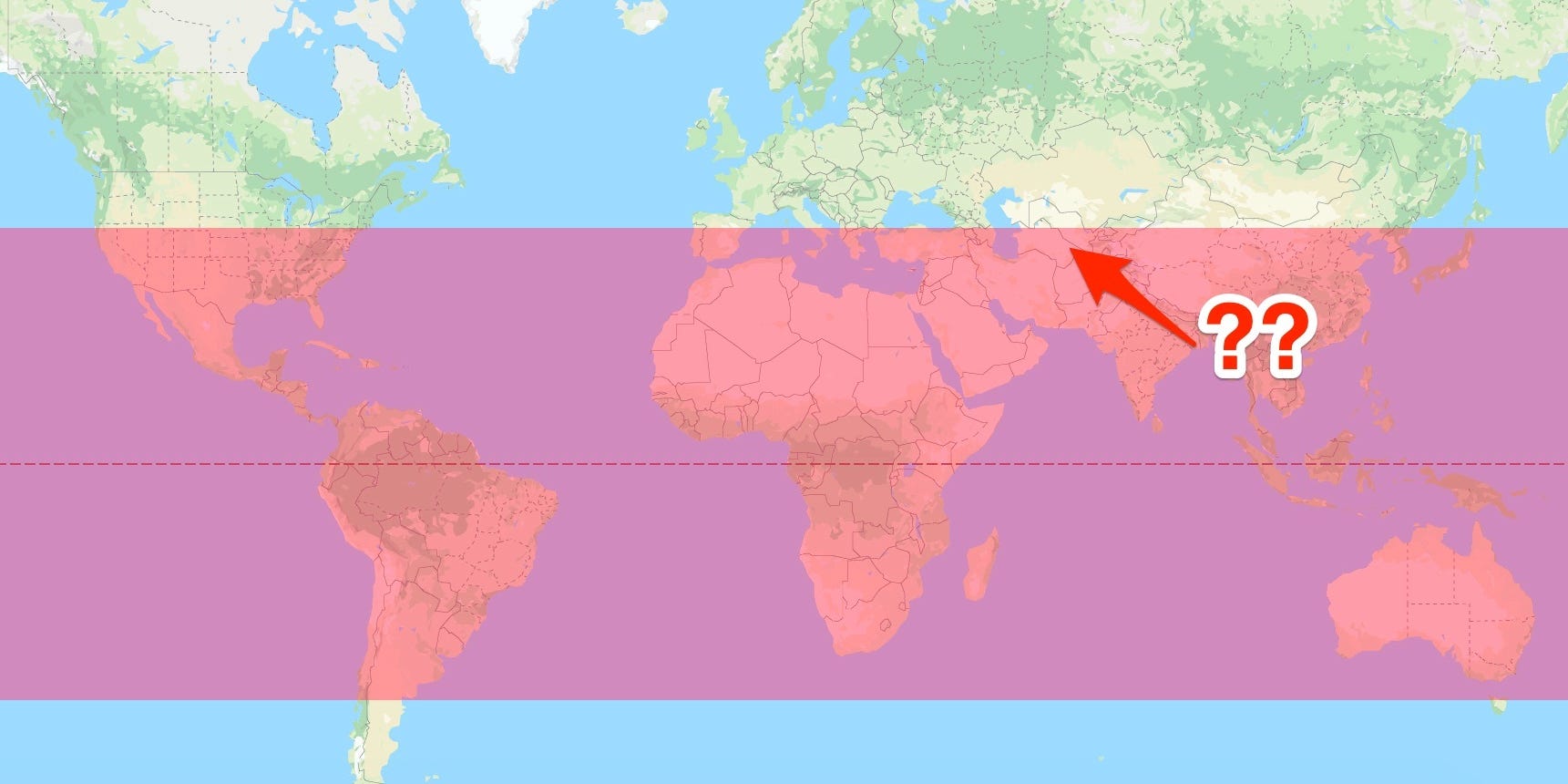
Google Maps/Insider
- The US military and others are tracking a Chinese rocket piece due to re-enter the atmosphere soon.
- Experts have highlighted a huge swathe of the planet where the rocket could come down.
- Some say it will re-enter over Turkmenistan Sunday, but estimates differ by thousands of miles.
- See more stories on Insider's business page.
Experts are tracking a large section of a Chinese rocket which is due to re-enter the atmosphere in the next two days or so.
As the impact gets closer, calculations about the time and location of the debris re-entry are likely to improve. Until then, estimates will "continue to vary wildly," according to the US military.
It is very difficult to predict where the rocket will land because it is thought to be making its descent in an uncontrolled way.
Space-Track, a website run by the 18th Space Control Squadron, a branch of the US military that tracks space debris, said in a tweet on Friday that the rocket will reenter around 11:13 PM UTC, or 7:13 PM ET, on Saturday.
According to the coordinates given in the tweet, the rocket would fall over Turkmenistan.
-Space-Track (@SpaceTrackOrg) May 7, 2021
These estimates will "continue to vary wildly," Space-Track said, until it becomes clear when exactly the rocket will reach the atmosphere.
On Thursday, it predicted the rocket would land in the middle of the Indian Ocean.
That is because the rocket currently hurtling around the Earth on an orbit at about 18,000 mph, as it lowers towards the Earth at around 0.3 mph, Harvard Astronomer Jonathan McDowell said in a tweet.
That means if the estimates of when the rocket would reach the atmosphere are off by even a half an hour, the rocket could be almost on the other side of the Earth.
As of early Friday, the margin of error for Space-Track's estimate was at least 18 hours either way.
Another body tracking the rocket, the Aerospace Corporation, a not-for profit-company that receives US funding, predicted on Thursday that the rocket would reenter the atmosphere on May 9 at 3:43 AM UTC, which is Sunday, at 11:43 PM, ET time.
-The Aerospace Corporation (@AerospaceCorp) May 6, 2021
The rocket could hit the atmosphere anywhere along the yellow lines in the map above at that time, they say.
So far, the only certainty is that the rocket would re-enter the atmosphere within a latitude of 41.5 degrees north and south of the equator, which covers an area as far north as New York City, and as far south as New Zealand.
The "exact entry point of the rocket into the Earth's atmosphere cannot be pinpointed until within hours of its reentry," US Space Command, a branch of the US military that is tracking the object, said in a statement on Tuesday.
The Space-Track Twitter page said it would publish estimates daily.
The object that is being tracked is the core module of a Long March 5B rocket that was launched by China on April 29.
Common practice is for these types of objects to fall back to Earth without reaching orbit, which makes it easier to predict where they will fall, Aerospace Corporation said in a blog post.
But the core module of the Chinese rocket reached orbit, and is now circling the Earth on an elliptical pattern, slowly being pulled closer and closer to the atmosphere, Aerospace Corporation said.
The object, which is thought to be around 22 tons, should mostly disintegrate upon reentry, but experts are concerned that some debris could survive and reach the surface of the Earth.
A spokesperson for China's Foreign Ministry said on Friday that because of the design of the rocket, the vast majority of the devices will be burnt up and there is "a very low probability" of its re-entry causing harm.
Chinese authorities plan to release information about the timing of the rocket's re-entry in "a timely manner," he said, according to the Associated Press .